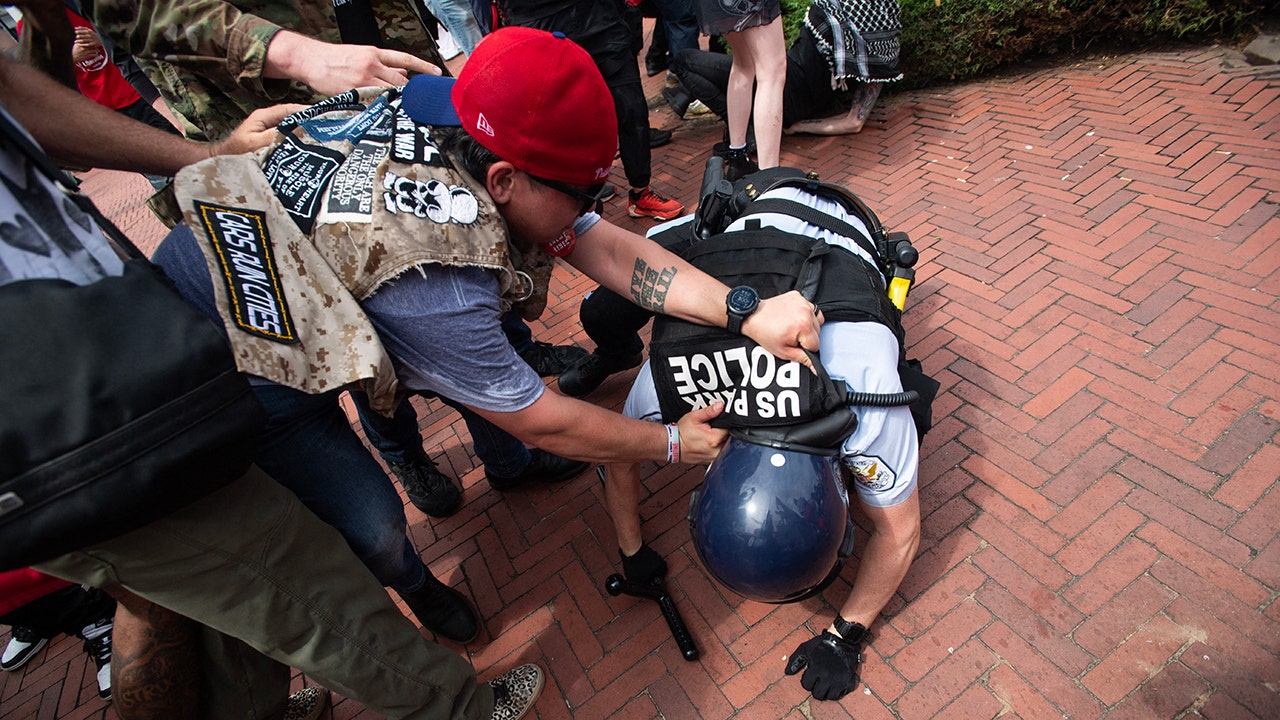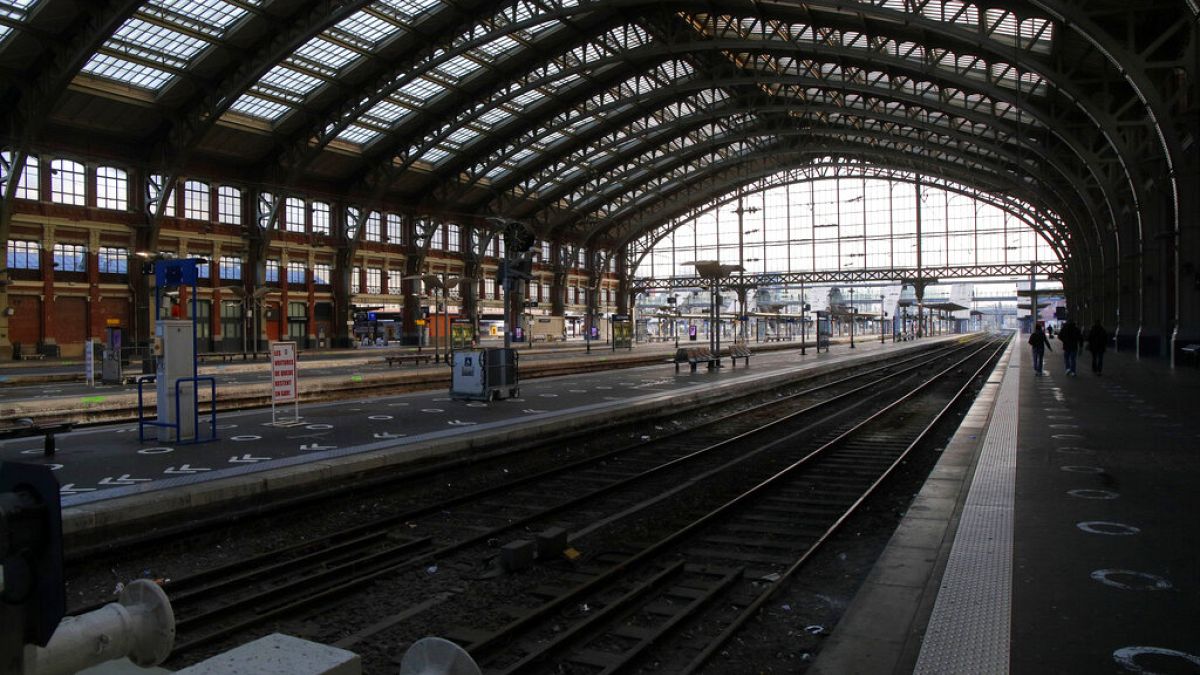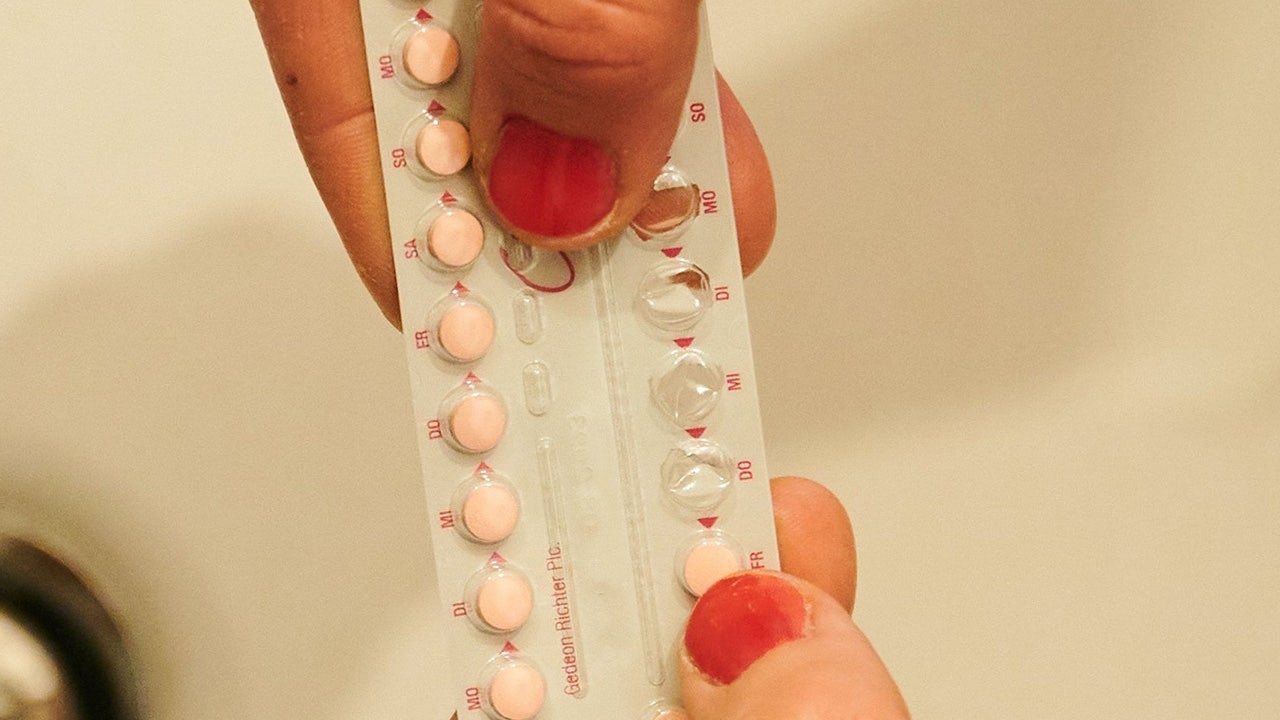Culture
NFL coaches pick the Super Bowl winner: Why they think Kansas City has the edge

For the second consecutive season, the Kansas City Chiefs enter the Super Bowl as an underdog. They defeated the favored Philadelphia Eagles last season and will try to knock off the favored San Francisco 49ers on Sunday.
Will it feel like an upset if Kansas City makes it happen? The Chiefs possess the ultimate edge in quarterback Patrick Mahomes, who is healthier this season than last and has played brilliantly through most of the playoffs.
Each year at this time, I ask a collection of NFL coaches which team they are picking to win the Super Bowl and why. Our panel fared pretty well last season, with the first coach correctly picking the Chiefs to win by three.
Four coaches weighed in with predictions this year. We pick up the conversation with a defensive coach’s insights into what bothers 49ers quarterback Brock Purdy, and whether the Chiefs are well-equipped to exploit this specific vulnerability.
GO DEEPER
Super Bowl 2024 betting guide: Expert picks, props, analysis, and all the info you need
Defensive coach
The Fighting Taylor Swifts are playing better defense than the Niners right now, and that could be the difference. San Francisco has to play better on defense to win. The 49ers are still dangerous and violent, but they are giving up more yards and plays. I think they will play pretty good, but if you ask in my gut, I’d still think Kansas City pulls it out.
Affecting Brock Purdy is one of the biggest keys to this game. The teams that give Purdy problems are the ones that are able to affect him in the pocket. Cleveland was able to do that. Detroit could not affect him that way, but the Chiefs can. They do a really good job of getting their hands up. That’s a big deal against Brock. They can do a really good job of affecting not only the longer throws but the quicker throws at all the different launch angles.
Purdy’s strength is how strong his lower body is. George Kittle’s quote was really funny when he said Purdy looks like one of those little water dragons running across the water. That is exactly what Purdy looks like. His legs are strong as hell. But when you can push the pocket to his front foot, he struggles. It is hard to get there because sometimes they throw it fast, but I think the Chiefs have an ability to do that.
When people get to Purdy’s front foot, the ball will tail and drag or drift. Like the one he threw into the Packer guy’s belly. He couldn’t get full twist out of his hips and it floated. It is easier said than done to affect Purdy in this way. The 49ers know what they are doing, and Purdy is really good, and Kyle is good at calling it, but I think the Chiefs with four (rushers) can do that some of the time.
(Chiefs defensive coordinator Steve Spagnuolo) is going to pressure and also play his two-high combination coverages. It is hard to play combination coverages when the 49ers get everybody out. They have positionless players. (Christian) McCaffrey is going to be a wideout, Deebo (Samuel) is going to be in the backfield and 44 (Kyle Juszczyk) is going to be everywhere. When you play them in split-safety defense and they can see it and get it out, the matchups can be really good.
The Chiefs do not always tackle well when you get them in space. Steve has done such a good job this year of not letting that happen. In other years, you could isolate their guys. All of Kyle’s guys are 6 feet or 6-1, 215 and can run after contact with great hands and anger. That would be their advantage if they can find ways to get around the D-line and then get those guys going.
I also think San Francisco will attack the edges in the run game, like Kyle did with Atlanta versus New England in the Super Bowl. If you can get around Kansas City’s interior and force guys other than (Justin) Reid to tackle, you can do some things. But you gotta get around their big guys. I think Kyle will find a way to do that, but I trust the Chiefs a little more.

GO DEEPER
Inside 49ers-Chiefs Super Bowl matchup: What to watch when the Niners have the ball
Defensive coordinator No. 1
This is going to be a really interesting game because Spags has that defense rolling, and I think it’s going to create problems. They’ll be able to get after Brock Purdy. Spags will come with some good schemes to at least make Purdy think, throw his rhythm off.
The 49ers, that whole team is built off a front-running mentality. When they play with a lead, they just pounce and they’re better, they’re more athletic, their talent shines. When they play from behind, it is usually different. Against Detroit, they came back. I’ll give them credit there, but Detroit royally screwed that up. What happened was not repeatable.
What you have to do with the 49ers is match them early. I would take the ball and try to score. Green Bay did that. I know it is only 7-0 early and doesn’t matter, but if you score early, you are not in response to them.
Mahomes will make the right plays when they need to. He’s been protecting the ball, which he hadn’t been doing the first half of the season as much. People have to honor Rashee Rice now. He has developed. MVS (Marquez Valdes-Scantling) has become more consistent.
The 49ers’ defense has shown throughout the playoffs they’ll get the ball moved on them. They don’t have many answers. You hit their soft spots and don’t let their rushers get going and they don’t get takeaways, you are fine. The coverage system isn’t elaborate. They’ve got one good corner, one safety playing really well.
When you have a guy like Andy Reid over there with Patrick Mahomes, they’re going to find those soft spots. Andy is OK taking 5 (yards) from Travis Kelce on a catch-and-run. It’s just hard to go against Reid and Mahomes.

GO DEEPER
What makes the Andy Reid-Patrick Mahomes partnership as special as any great coach-QB combo?
Defensive coordinator No. 2
The better team is probably San Francisco, but the Eagles were probably a better team last year, and it came down to Patrick Mahomes.
For San Francisco, so much of it is game flow. It’s not to say that Brock Purdy can’t come from behind. I’m not trying to say that. But I think they are a team that has a much better chance of winning when they play their game, whereas the Chiefs might find a way to win in any type of game a little bit better.
That is what happened in 2019 when those teams played. Kansas City was down two scores, and then all of a sudden, they are up two scores in the fourth quarter. It was unbelievable.
San Francisco came back to beat Green Bay and Detroit, but they were drastically better than those teams, especially Detroit. Detroit is not a team, in my opinion, that can hang with San Francisco. Detroit not being able to put that game away shows how much better of a team San Francisco was.
I could see San Fran’s defense not being dominant against the Chiefs. I don’t know if they are a dominant defense like they were with DeMeco Ryans and Robert Saleh. It doesn’t feel like they are all that. Deep down, I’m saying Chiefs.

GO DEEPER
Inside 49ers-Chiefs Super Bowl matchup: What to watch when KC has the ball
The 49ers’ offense is hard to defend because they have skill guys that can create yards after the catch and they have a quarterback who can read defenses very fast and put the ball in a spot accurately. Their dropback game is very timing-based, whereas Kansas City is not that.
Mahomes’ ability to play on or off schedule could be the difference. What makes Mahomes good is that he’s a great off-schedule quarterback who does not have to play off-schedule to be great. I always felt that was the thing with Russell Wilson. When everyone said he was great, I felt that to be a high-level quarterback, you still have to be able to throw it on time. Mahomes can do that.
Purdy’s not bad off-schedule because he’s got some slipperiness to him. He just doesn’t play as much off-time. Mahomes is elite off-time, and I think that’s Kansas City’s edge.
Offensive coach
Kansas City surprisingly with (Isiah) Pacheco runs the ball pretty well, and they’ve been more willing to run it, and I think that does take some pressure off Mahomes. It has served their defense well. That has probably made them a more complete team.
San Francisco gave up 280 yards against Detroit in the first half. Maybe they were surprised by Detroit, but they still haven’t figured out how to slow down the perimeter runs. Pacheco is a slasher, and if you got him on the edge, I think he would be good, despite being more of an inside runner.
Detroit just kept pinning the ends and tossing the ball, and the 49ers’ secondary was late in supporting. I’m sure San Francisco is going to make an adjustment for the crack toss plays. They just have to get someone up in faster support. That is not a major adjustment, but they probably will be reluctant to do it because of Mahomes.
I like Kansas City. I want to like San Francisco, but I think in these games, the quarterback matchup is pretty big, and this is a big separation between these guys.
Christian McCaffrey and Deebo Samuel, those two guys could be enough to overcome that, but I don’t think so in this game.
Final thoughts
If the 49ers win, surely someone associated with their team will claim no one gave them a chance. It won’t be a huge stretch, despite oddsmakers favoring the 49ers, because so many people in and around the game are picking the Chiefs. I took Kansas City by a 24-20 margin in our staff picks. It wasn’t a pick against the 49ers as much as it was a fear of picking against Mahomes. I’ve sided with him in every week of the playoffs. Why stop now?

GO DEEPER
With latest Super Bowl run, Chiefs’ would-be dynasty echoes ‘Patriot Way’
(Top photos of Patrick Mahomes and Brock Purdy: Patrick Smith, Kevin Sabitus / Getty Images)

Culture
Mets shouldn't be buyers. They should be aggressive buyers at the deadline

NEW YORK — On Wednesday, in discussing how his bullpen plans shift moment to moment over a nine-inning game, Carlos Mendoza chuckled at the idea of forming a pregame plan and sticking to it.
“I don’t know that there’s ever a time you come up with a game plan and stick to it,” the Mets manager said. “Every time you make an adjustment because the game unfolds. … You have an idea, but then you have to make adjustments.”
Perhaps Mendoza’s boss, David Stearns, should take that advice when it comes to this season.
The Mets entered 2024 with a clear, consistent plan from ownership down to the clubhouse. While they did not possess the high expectations of previous spring trainings, they thought they could be legitimate contenders for the postseason while preserving a sustained window of contention in the future. And here they are, days ahead of the trade deadline, as legitimate contenders for the postseason who have preserved a sustained window of contention in the future.
But after another memorable win Thursday night, a walk-off 3-2 victory over Atlanta that felt like the inverse of so many nightmarish nights at Turner Field, maybe it’s time for Stearns and the New York front office to get a little greedy about 2024. Yes, the Mets are going to be buyers at the trade deadline. But let’s make a case for the Mets to do more than add a reliever in the next week, a case for the Mets to be aggressive buyers like they last were en route to an unexpected pennant in 2015.
The Mets are good enough
Let’s do some blind resumes for teams on the morning of July 26 over the years.
Blind resumes
|
Team
|
W
|
L
|
Pct.
|
RD
|
NL Rank
|
GB of Playoffs
|
|---|---|---|---|---|---|---|
|
A |
56 |
46 |
0.549 |
85 |
5 |
— |
|
B |
55 |
47 |
0.539 |
9 |
T5 |
— |
|
C |
55 |
47 |
0.539 |
49 |
T3 |
— |
|
D |
54 |
48 |
0.529 |
23 |
5 |
— |
|
E |
50 |
46 |
0.521 |
46 |
7 |
0.5 |
|
F |
48 |
51 |
0.485 |
36 |
10 |
6 |
OK, blindfolds off! What do those pretty similar teams all have in common? They all won the pennant.
NL pennant-winners (plus the Mets)
|
Team
|
W
|
L
|
Pct.
|
RD
|
NL Rank
|
GB of Playoffs
|
|---|---|---|---|---|---|---|
|
56 |
46 |
0.549 |
85 |
5 |
— |
|
|
55 |
47 |
0.539 |
9 |
T5 |
— |
|
|
55 |
47 |
0.539 |
49 |
T3 |
— |
|
|
54 |
48 |
0.529 |
23 |
5 |
— |
|
|
50 |
46 |
0.521 |
46 |
7 |
0.5 |
|
|
48 |
51 |
0.485 |
36 |
10 |
6 |
They were also pretty aggressive at the trade deadline. I classified the 2018 Dodgers (Manny Machado) and 2022 Phillies (David Robertson, Brandon Marsh and Noah Syndergaard) as All-in Buyers — teams that surrendered significant prospect capital for the present. The 2019 Nationals added three relievers, including the guy who would record the final out of the World Series. In 2021, Atlanta brought in four outfielders, including the NLCS and World Series MVPs. In 2023, Arizona dealt for a closer to better position itself for the postseason.
(For what it’s worth, the 2015 Mets, another All-in Buyer, were 50-48 with a negative-seven run differential on July 26.)
No, the Mets lack the kind of rotation and bullpen you generally rely on to carry you in October. However, New York possesses an offense that appears built for the postseason. As evidenced by its bashing of Gerrit Cole twice in the last month, the Mets’ lineup can go deep with the best of them. Only Baltimore has hit more homers since the Mets’ hot streak started May 30, and they’re tied for fourth in the majors in homers on the season — ahead of everyone but the Dodgers in the National League. On Thursday, New York was in the game against a dominant Chris Sale because Francisco Lindor turned one Sale mistake into two Mets runs.
Homers carry offenses come October. The similarly productive but differently constituted offense in 2022 tied for 15th in the league in home runs, then watched Atlanta and San Diego outhomer it in the biggest games of the season. This Mets offense can swing a short series with its power.
The National League is open
Here’s an important caveat: If I covered the Pirates or the Reds or the Padres or the Diamondbacks, I’d probably be making the exact same case. Because the National League is as open as it’s been in years.
Los Angeles and Atlanta have been the two best teams in the senior circuit for the last several seasons. Both are enduring more turbulent regular seasons than they’re accustomed to. The Dodgers continue to have health questions about their rotation, a dynamic that doomed them last October. Atlanta’s best hitter and best pitcher are out for the season. Its lineup looks like a shell of what the Mets are used to confronting.
While the Phillies have taken the mantle of the NL’s team to beat, they’re a team the Mets are pretty good at beating. They memorably went 14-5 against Philadelphia in 2022, and even during a down 2023 went 6-7 against it. This year, the Mets are 2-4 against the Phillies. And remarkably, since the start of the 2022 season, New York is 10-3 when facing either Aaron Nola or Zack Wheeler.
The timing actually clicks
It’s really tempting for teams to try manipulating their window of contention — to be cautious this year to put more eggs in a basket down the line. In doing so, however, they often miss the year to win.
The 2015 Mets could have been more cautious: Syndergaard and Steven Matz were rookies, Wheeler was hurt, the NL had several very good teams — surely the Mets’ best chance to advance in October would be down the road? As it turns out, that young rotation was never as healthy or as dominant as it was right then and there, and the Mets’ aggressiveness paid off in a pennant.
(Contrast that with the 2013-2015 Pirates, who never made the big move to push a very good team over the top. They still haven’t won a postseason series since 1979.)
For the Mets, it’s also fair to ask: What year, specifically, are they waiting for? Injuries to some key prospects this year mean New York won’t head into spring training 2025 planning to give an everyday spot to a talented rookie. The full incorporation of guys like Jett Williams, Drew Gilbert, Luisangel Acuña and Ryan Clifford won’t happen until 2026 — by which point Lindor will be 32 and Brandon Nimmo 33, on the outskirts of their primes.
The goal is to open a sustained window of contention and pounce on legitimate opportunities to win divisions, pennants and championships. The Mets are there. The two players they have signed long-term are having career-best years. Their cornerstone first baseman might not be here next year.
The window of contention is already open.
What does this mean?
Let’s be honest: This is where most columns like this end. There’s all that reasoning for going for it, now it’s Stearns’ job to turn that into something.
But I’d be remiss if I didn’t mention that the current shape of the deadline market makes it difficult to go for it. Teams like the Pirates and Reds and Padres and Diamondbacks are all still in it in the National League, and the number of sellers is tinier than usual. The best starter likely to be traded may not be able to start much more this season. The best reliever likely to be traded has a walk rate you wouldn’t comfortably hit on in blackjack.
It’s harder to provide the kind of blueprint for the deadline that I do for the offseason because acquisition costs in trades are so much more difficult to project than open-market salaries. So I’ll settle for suggestions that would fit more of an all-in approach.
1. Engage the White Sox on Garrett Crochet with the understanding you’d be acquiring him to pitch out of the bullpen in 2024. The Athletic reported Thursday that Crochet would prefer to stay on a starter’s schedule (albeit with limited innings) down the stretch of this season unless an acquiring team signs him to a contract extension.
As I outlined Thursday morning, the Mets could use a long-term ace. Here’s a 25-year-old left-handed All-Star who leads the league in strikeouts and is interested in a long-term extension. Those all feel like good things. (Like Wheeler, Crochet’s likely arbitration salaries for the next two seasons will be suppressed by his lack of availability up to this point in his career. Thus, a long-term extension would cost less against the luxury tax than it might otherwise.)
Trade for Crochet, extend him and make him a multi-inning reliever with scheduled appearances the rest of the way. Imagine him coming in behind your right-handed starters in the postseason and serving as a one-man bridge to Edwin Díaz. Put him back in the rotation in 2025 and beyond. That might be worth the significant package of prospects it would require, as it would mean the Mets wouldn’t have to dive into the deep end of the starting pitching market this winter for a free agent already in his 30s.
2. If Crochet proves too much, combine a rotation upgrade — chiefly, a pitcher who misses more bats than the current starters — with two additions in the pen and one to the bench.
In the rotation, Detroit’s Jack Flaherty and Toronto’s Yusei Kikuchi come to mind. Flaherty will cost a good amount, but he too could become a viable option to re-sign.
For the bullpen, one high-leverage lefty should be the priority. Scroll past Tanner Scott to his teammate Andrew Nardi or to The Athletic’s years-long target Andrew Chafin of the Tigers. Another multi-inning arm could help keep the group fresh, as well. Cincinnati’s Buck Farmer or Detroit’s Alex Faedo could work there.
The final piece would be a versatile bench contributor who could protect the Mets against regression or injury at a few different positions. Detroit’s Andy Ibañez, Tampa Bay’s Amed Rosario, Toronto’s Isiah Kiner-Falefa and Oakland’s Abraham Toro could fit that role.
(Photo of José Buttó: Adam Hunger / Getty Images)
Culture
A history of spying in football: Drones, interns at training and kit men in ceilings

Are not even the Olympic Games sacrosanct?
Yeah, you’re right. Probably not, given their long history of judging corruption, state boycotts and widespread doping.
But the news which broke on Tuesday, three days before the opening ceremony and hours before the first action in the 2024 Games’ football tournament, meant that the cherished Olympic values of fair play stood in tatters even before organisers emblazoned that message across the Parisien sky and the River Seine.
That it was Canada who performed such an egregious breach of the rules — by all stereotypes a country known for its people being polite, respectful, laidback and just terribly nice — only adds to the ironic drama.
There are five rings in the Olympic logo — take just two of them intertwined, and they resemble a pair of binoculars.
So this is what happened…
On Tuesday, at a training session ahead of their opening match of the group stage in Saint-Etienne on Thursday, staff members from the New Zealand women’s football team noticed a drone hovering above them.
Bev Priestman, the Canada coach, watching her team in action earlier this year (Jason Mowry/Getty Images)
They called the on-site police, who detained the device’s operator, who was later revealed to be a staff member from the Canadian team, the reigning Olympic women’s champions, and their opponents in that opener today.
In an initial statement, the Canadian Olympic Committee (COC) apologised — but more was to come.
The following day, it became clear that there had been two drone incidents, with the other taking place five days earlier, on July 19. Now facing severe sanctions, the COC needed to act.
Joseph Lombardi, an “unaccredited analyst”, and Jasmine Mander, a member of the coaching staff who oversees Lombardi, have been removed from the team and sent home and Canada’s English head coach Beverly Priestman has voluntarily stepped down from being on the touchline for the New Zealand game.
“On behalf of our entire team, I first and foremost want to apologize to the players and staff at New Zealand Football and to the players on Team Canada,” Priestman said. “This does not represent the values that our team stand for.”
That final sentence is a little difficult to justify, given that spying on another team’s training is hardly an accidental action — nobody finds themselves flying a $2,000 piece of tech over their next opponents — twice — by mistake. Rather, it comes as a product of culture and command.
“I am ultimately responsible for conduct in our program,” Priestman added. “Accordingly, to emphasize our team’s commitment to integrity, I have decided to voluntarily withdraw from coaching the match on Thursday. In the spirit of accountability, I do this with the interests of both teams in mind and to ensure everyone feels that the sportsmanship of this game is upheld.”
This may be new to the Olympics — but spying in football is old business.
Teams sending scouts to watch the next side they are going to play at training probably predates the invention of the offside rule. In fairness, though, we do not know if ancient Olympian Theagenes of Thasos sent emissaries to watch Arrichion of Phigalia working on his moves.

Didier Deschamps, the France head coach, spotted a drone over training at the 2014 World Cup (Martin Rose/Getty Images)
In international football, France men’s manager Didier Deschamps noticed a drone above his players as they trained at the 2014 World Cup in Brazil — it was never discovered which, if any, of their group-stage rivals Ecuador, Honduras and Switzerland it belonged to.
Go back two more decades and ahead of a vital away World Cup qualifier against Norway in 1993, England manager Graham Taylor was so convinced his team were being watched that he moved their training base to a military facility. The issue? That new location was near the house of the chief sportswriter of one of Norway’s leading newspapers, who subsequently published their tactics the next morning. England lost, 2-0, in Oslo, ended up missing out on the 1994 World Cup, and Taylor got sacked.
Similarly, in a case of paranoia outweighing perspective, the Chilean football federation once sent up their own device to destroy a drone hovering over their session before a match against Argentina. It was perhaps football’s first case of aerial warfare since Roy Keane’s infamous tackle on Alfie Haaland. In this case, it turned out the questionable drone was a surveying tool being used by a Chilean telecommunications company.
But there is one example of spying which did emanate from South America — when, in early 2019, Leeds United’s Argentine head coach Marcelo Bielsa admitted sending an intern to watch the following weekend’s opponents Derby County work on their formation, set pieces and so on. It was not the first time.
“We watched training sessions of all the opponents before we played them,” Bielsa, now Uruguay’s head coach said. In Argentina, this practice was common apparently, and one he had continued after coming to work in Europe.
Officers have just attended the Training Ground for @dcfcofficial After a suspicious male was seen at the perimeter fence. Excellent searching conducted & male was located. All checks above board!
Keeping the team safe to bring home a win against #LUFC on 11th! #SpyingIsCheating pic.twitter.com/a12Zj8gISX— Derby Response – This account is closing (@DerbyResponse) January 10, 2019
Derby and Frank Lampard, their manager at the time, were furious. When Bielsa rang the former Chelsea and England midfielder to explain himself, there was no apology — but instead, in broken English, he attempted to remove any ambiguity around the circumstances.
Leeds won the ensuing match, 2-0 — and the following week, Bielsa held an unprecedented press conference for local journalists, 66 minutes long, in which he used a PowerPoint presentation to demonstrate the full extent of the analysis he carried out on opposition clubs.
For Bielsa, who held open training sessions throughout his time at Athletic Bilbao in Spain, watching teams going through their tactical preparations like this was not spying, but simply gathering information.

Leeds’ Bielsa, centre, admitted spying on Lampard, right, and Derby (Alex Dodd – CameraSport via Getty Images)
It was later pointed out by Leeds fans that, as a player, Lampard has been part of a Chelsea side which profited from similar, um, info-gathering missions.
In an interview with UK newspaper the Telegraph, former Chelsea manager Andre Villas-Boas admitted that, in his time as an assistant at the London club under Jose Mourinho, he would “travel to training grounds, often incognito, and look at our opponents’ mental and physical state before drawing my conclusions”. Chelsea won the Premier League title twice with Mourinho and Villas-Boas in situ.
Given the amount of information that rival clubs can draw on, some coaches are simply not too bothered by allegations of spying. In 2018, German Bundesliga side Werder Bremen used a drone to spy on Hoffenheim — but Hoffenheim’s coach Julian Nagelsmann, now manager of Germany’s national team, brushed off its impact.
“I’m not really angry at the analyst doing his job,” Nagelsmann said, before adding it was “commendable” that Bremen were going to such lengths to try to win.
Similarly, in the aftermath of the Leeds incident, former striker Gary Taylor-Fletcher recalled an incident from his Lincoln City side’s 2003-04 League Two play-off semi-final second leg away to Huddersfield Town.
While the Lincoln players were receiving their half-time team talk, Taylor-Fletcher tweeted, a polystyrene ceiling tile broke and then fell down — revealing the sizable heft of longtime Huddersfield kit man Andy Brook listening from the cavity above. Lincoln went on to lose the tie, while their opponents lost their dignity — but did end up getting promoted. And Taylor-Fletcher can’t have been too annoyed because, a year later, he left Lincoln for… Huddersfield.
Football is not alone in this sort of espionage — and other sports can be much more high-tech.
The McLaren Formula 1 team were given the largest fine in sporting history — $100million — and thrown out of the sport’s 2007 Constructors’ Championship after senior engineer Mike Coughlan received technical design documents which had been leaked from rivals Ferrari.
There have also been several high-profile incidents in American football.
Also in 2007, the New England Patriots, the most successful NFL team of recent years with six Super Bowl wins since the turn of the century, were punished for recording the defensive signals given to players during a game by coaches of the New York Jets. New England’s legendary head coach Bill Belichick was fined $500,000 — the maximum allowed by the league, and the most in NFL history — while the team were denied their first-round pick in the following year’s player draft.

Belichick in 2007, when his team were caught recording the New York Jets’ defensive signals (AP Photo/Mel Evans, File)
Does cheating prosper? Well, New England won all 16 games in the 2007 regular season — but were surprisingly beaten in the Super Bowl by the New York Giants.
And it’s not just the professionals in the gridiron game. Last October, the University of Michigan’s head coach Jim Harbaugh was suspended over a similar sign-stealing scandal which quickly escalated to involve allegations also levelled at several other college teams. Harbaugh was banned for several games, but Michigan went on to win the U.S. college national championship on his return. Harbaugh has since moved on to become head coach of the NFL’s Los Angeles Chargers.
So this is the bottom line: teams cheat.
In a multimillion (or even billion) dollar/pound/euro industry, marginal gains like those detailed here are worth the risk of detection. For every Canada, Leeds and Michigan caught, there are clubs and sides whose operatives get away with it.
Widespread but not necessarily endemic, it is both serious and not serious, funny and infuriating, the natural by-product of a game being taken as lifeblood.
Back in the ancient Olympics, contemporary accounts reveal athletes being bribed to say they were from certain city-states rather than others — facing a potential punishment of public flogging if they were caught.
Things have not really changed — and the punishment, at least to the guilty party’s public reputation, is not so different either.
Teams are willing to run that risk.
(Top photos: Getty Images; design: Eamonn Dalton)
Culture
Esteban Ocon joins Haas F1 for 2025 season

Esteban Ocon will race for Haas in Formula One from 2025 after signing a multi-year deal with the American team.
Haas announced on Thursday ahead of this weekend’s Belgian Grand Prix that Ocon, 27, would complete its line-up for next year alongside British rookie Oliver Bearman, who will graduate from Formula Two.
The Frenchman will become the first grand prix winner to race for Haas, and the move sees him reunite with Ayao Komatsu, Haas’s team principal, who served as his engineer for his maiden F1 test with Lotus back in 2014.
Ocon said in a statement that he and Haas had enjoyed “honest and fruitful discussions these last few months” about the future, and that he would be “joining a very ambitious racing team, whose spirit, work ethic, and undeniable upward trajectory has really impressed me.”
The move means Haas will run an all-new F1 line-up for 2025 as Ocon and Bearman replace Nico Hulkenberg and Kevin Magnussen, both of whom were already confirmed to be leaving the team.
GO DEEPER
Oliver Bearman announced as Haas F1 driver for 2025 season
“The experience he brings, not just from his own talent base but also from working for a manufacturer team, will be advantageous to us in our growth as an organization,” Komatsu said of Ocon.
“It was vital we had a driver with experience in beside Oliver Bearman next year, but Esteban’s only 27 — he’s still young with a lot to prove as well. I think we have a hungry, dynamic driver pairing.”
What led Ocon to Haas?
Since Ocon announced in June that he would be leaving Alpine upon the expiration of his contract at the end of the season, Haas has always looked like his most likely destination.
Ocon was always going to be part of what is proving to be a very fluid F1 driver market for 2025, offering race-winning experience to any interested teams after his shock victory for Alpine at the 2021 Hungarian Grand Prix.
There were talks with a number of teams over a potential drive for next year, with Williams previously holding an interest in him as an alternative to its top target — Carlos Sainz.

Ocon is currently racing with Alpine (Bryn Lennon – Formula 1/Formula 1 via Getty Images)
But it became clear in recent weeks that a deal with Haas was close to being finalized, particularly after the team confirmed Magnussen’s departure in Hungary.
Ocon said last week it was “very clear what our intentions are for the future,” with the hope of getting a deal announced before the summer break, which starts next week.
He will join a Haas team currently enjoying an upswing in performance under Komatsu. It lies seventh in the constructors standings, and has already scored more than double its points tally from the entirety of last year.
A fresh start for Ocon
The move will serve as a new beginning to Ocon, whose final season with Alpine has proven to be a frustrating one.
Between the team’s lack of performance and tension with teammate Pierre Gasly that flared after their collision on the opening lap in Monaco, there was always the feeling a chapter was ending, even prior to news of Ocon’s departure.
This move will end Ocon’s long-standing relationship with the Enstone-based team, known previously as Renault and Lotus, which began more than 10 years ago. He joined their junior academy at 14, but their financial issues led Mercedes to take him under its wing.
Mercedes helped Ocon get onto the F1 grid in 2016 and quickly win praise for his performances and consistency while driving for Force India, leading to him even being a consideration for a Mercedes F1 seat in 2020 as teammate to Lewis Hamilton.

GO DEEPER
6 candidates to replace Lewis Hamilton at Mercedes
But he was never seriously on Mercedes’ radar this time around as they look to replace Hamilton, with the vacant seat likely to go to its 17-year-old protege, Andrea Kimi Antonelli, who is racing in F2.
With Haas, Ocon will get long-term stability and, for the first time in his career, have the chance to help build a team up by serving as the experienced head alongside a much younger teammate in Bearman.
(Andrea Diodato/NurPhoto via Getty Images)
-
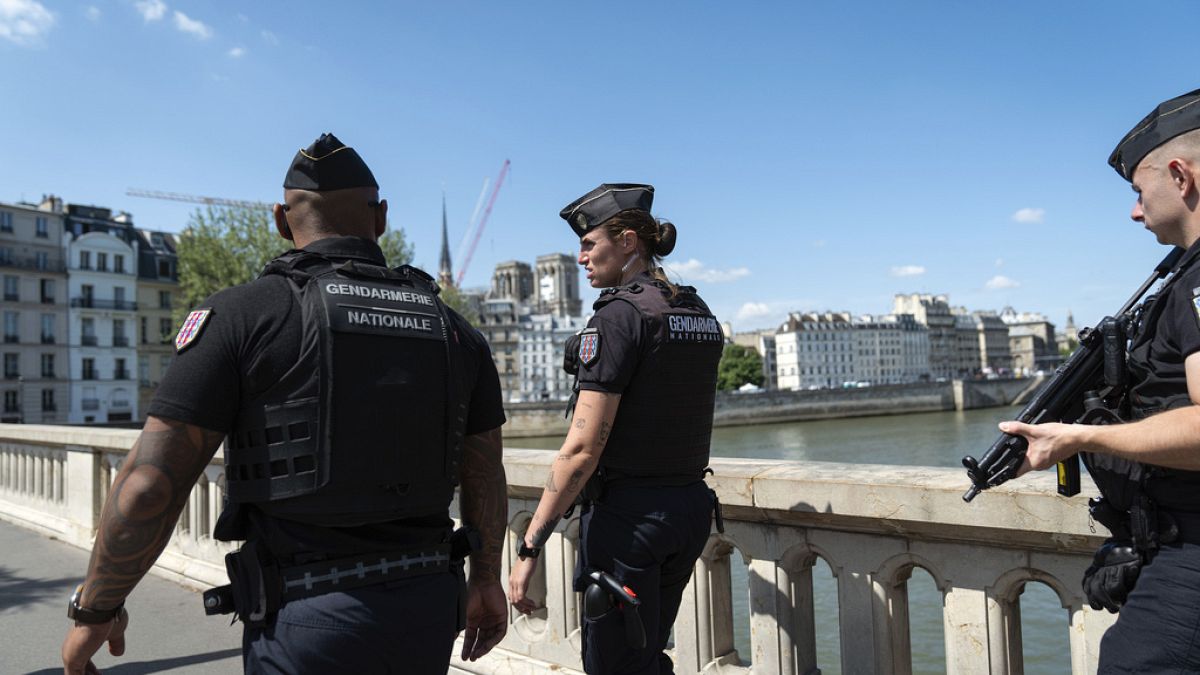
 World1 week ago
World1 week agoOne dead after car crashes into restaurant in Paris
-
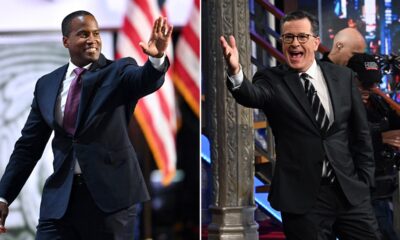
 Midwest1 week ago
Midwest1 week agoMichigan rep posts video response to Stephen Colbert's joke about his RNC speech: 'Touché'
-

 News1 week ago
News1 week agoVideo: Young Republicans on Why Their Party Isn’t Reaching Gen Z (And What They Can Do About It)
-

 Movie Reviews1 week ago
Movie Reviews1 week agoMovie Review: A new generation drives into the storm in rousing ‘Twisters’
-

 News1 week ago
News1 week agoIn Milwaukee, Black Voters Struggle to Find a Home With Either Party
-
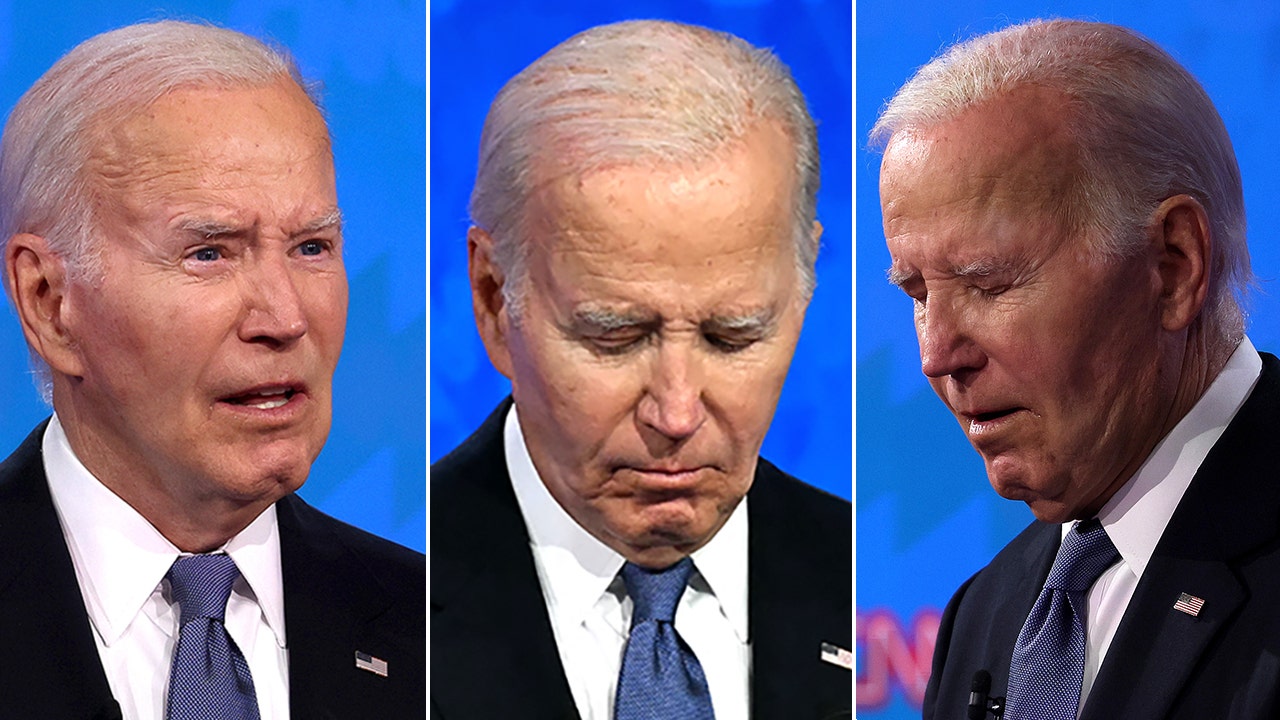
 Politics1 week ago
Politics1 week agoFox News Politics: The Call is Coming from Inside the House
-

 News1 week ago
News1 week agoVideo: J.D. Vance Accepts Vice-Presidential Nomination
-

 World1 week ago
World1 week agoTrump to take RNC stage for first speech since assassination attempt















